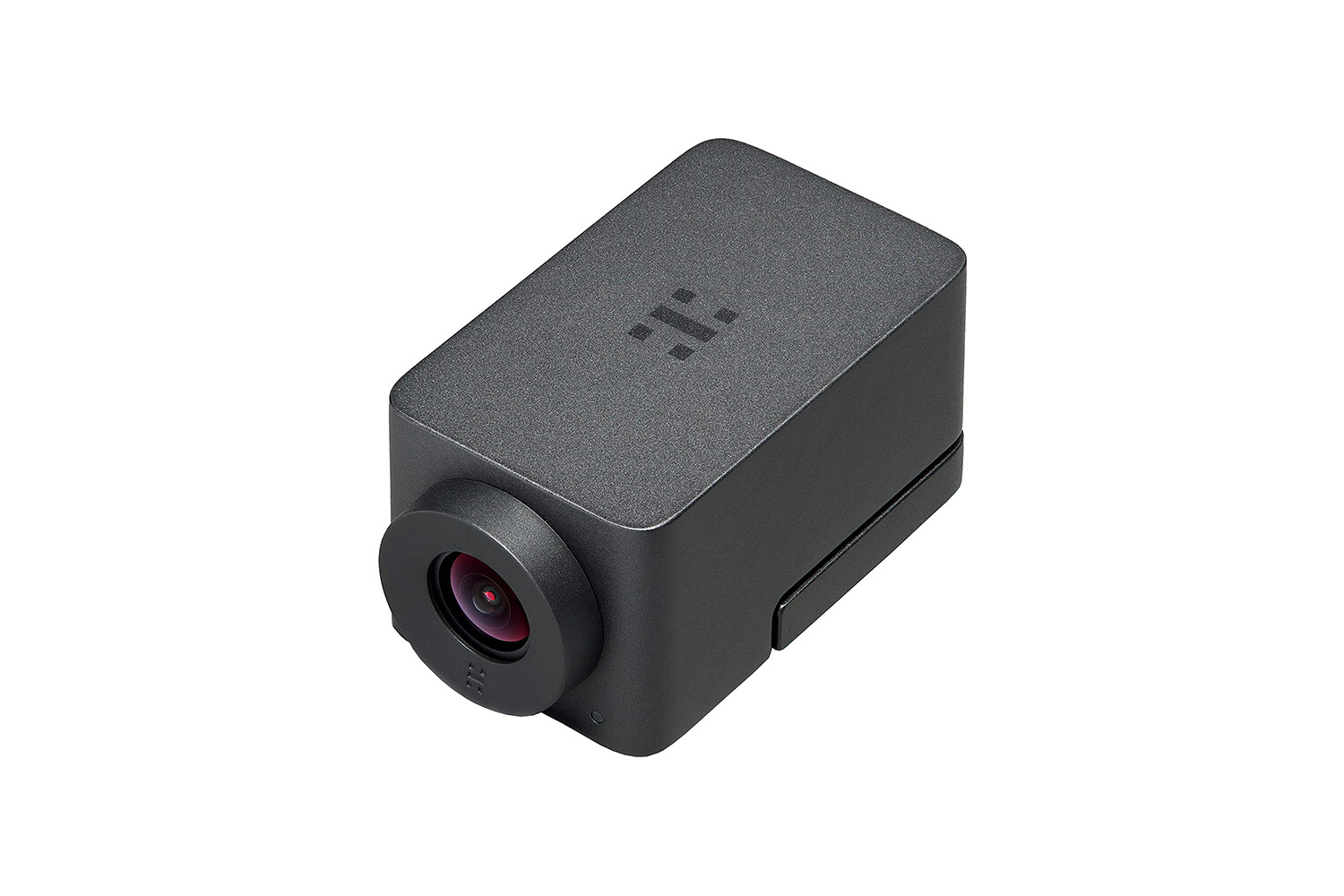



























£564.00*
- Resolution 1920 x 1080 Full HD
- Camera resolution 12 MP
- Field of view 150°
- Frames per Second 30 fps


Product information
The Huddly ONE is designed for one-person scenarios. It offers full HD video with wide angle and intelligently adjusts image brightness. ONE works on Mac and PC, with any app.
Make a good impression
With the right tools, you can do great work from anywhere. Huddly ONE transforms your home office into a high-quality video conferencing system and makes sure you look your best.
Portrait lighting
Huddly ONE analyses the lighting conditions in the image. The camera automatically optimises the brightness so that your face is well lit and your facial expressions are recognisable.
Perspective correction
The camera's wide-angle image is defocused and perspective corrected in real time, creating a natural, lifelike view.
Desktop frame
A standard zoom level tailored to the one-person home office scenario. The frame can be adjusted at any time to suit personal preferences.
For desktop and laptop
Huddly ONE can be easily installed on your computer for instant, high-quality meetings. While embedded cameras have a narrow viewing angle and poor video quality, ONE offers a wide viewing angle and full HD.
USB plug-and-play
Huddly ONE is USB powered and suitable for desktop and laptop, Mac and PC. It works with all collaboration platforms such as Microsoft Teams, Zoom and Google Meet.
High-quality materials
The Huddly ONE is made of high-quality, durable mechanical and electronic components. The aluminium housing protects the camera from damage and gives it a sleek, sophisticated look.
Desktop frame
A standard zoom level tailored to the scenario of a one-person home office. The image detail can be adjusted at any time to suit personal preferences.
Digital pan/tilt/zoom
The camera has no moving parts, so the pan, tilt and zoom functions can be adjusted smoothly, silently and instantly.
Real-time de-blurring
The camera's wide-angle image is de-blurred and perspective corrected in real time for a natural, lifelike view.
Portrait lighting
The camera uses AI to understand the lighting conditions in the image. It automatically adjusts exposure to ensure faces are well lit and facial expressions are clearly visible.
Software-enhanced
The camera will become even smarter over time with regular software enhancements and new smart features.
Technical data
| Name | Huddly One Conferencecamera Conference Camera, 1920 x 1080 Full HD, 12 MP, 30 fps, 150° |
|---|---|
| Article number | 1000024034 |
| GTIN/EAN | 7090043790603 |
| Model name | One Conferencecamera |
| Brand | Huddly |
| Product Type | Webcam |
| Application | Small rooms |
| Resolution | 1920 x 1080 Full HD |
| Frames per Second | 30 fps |
| Camera resolution | 12 MP |
| Camera sensor | CMOS - 11 mm (1/2.3") - 12 MP |
| Field of view | 150° |
| Inputs | 1x USB-C |
| Product width | 4 cm |
| Product height | 3.3 cm |
| Product depth | 6.4 cm |
| Weight | 1 kg |
| Colour | Black |
| Delivery contents | Quick user guide , USB-C Cable |
| Condition | New |
| Warranty | 24 Month |
| Warranty type | Bringin service Service and support information |
Product safety
| Person responsible for the EU |
|---|
| EET Deutschland GmbH |
| Elisabeth-Selbert-Straße 5a |
| 40764 Langenfeld |
| Germany |
| 02173 / 200 41 0 |
| info@eet.de |



